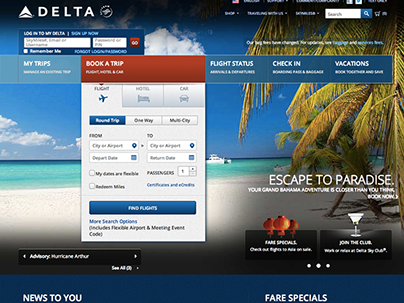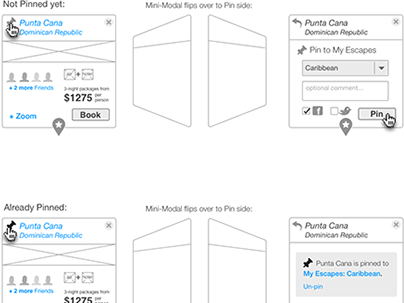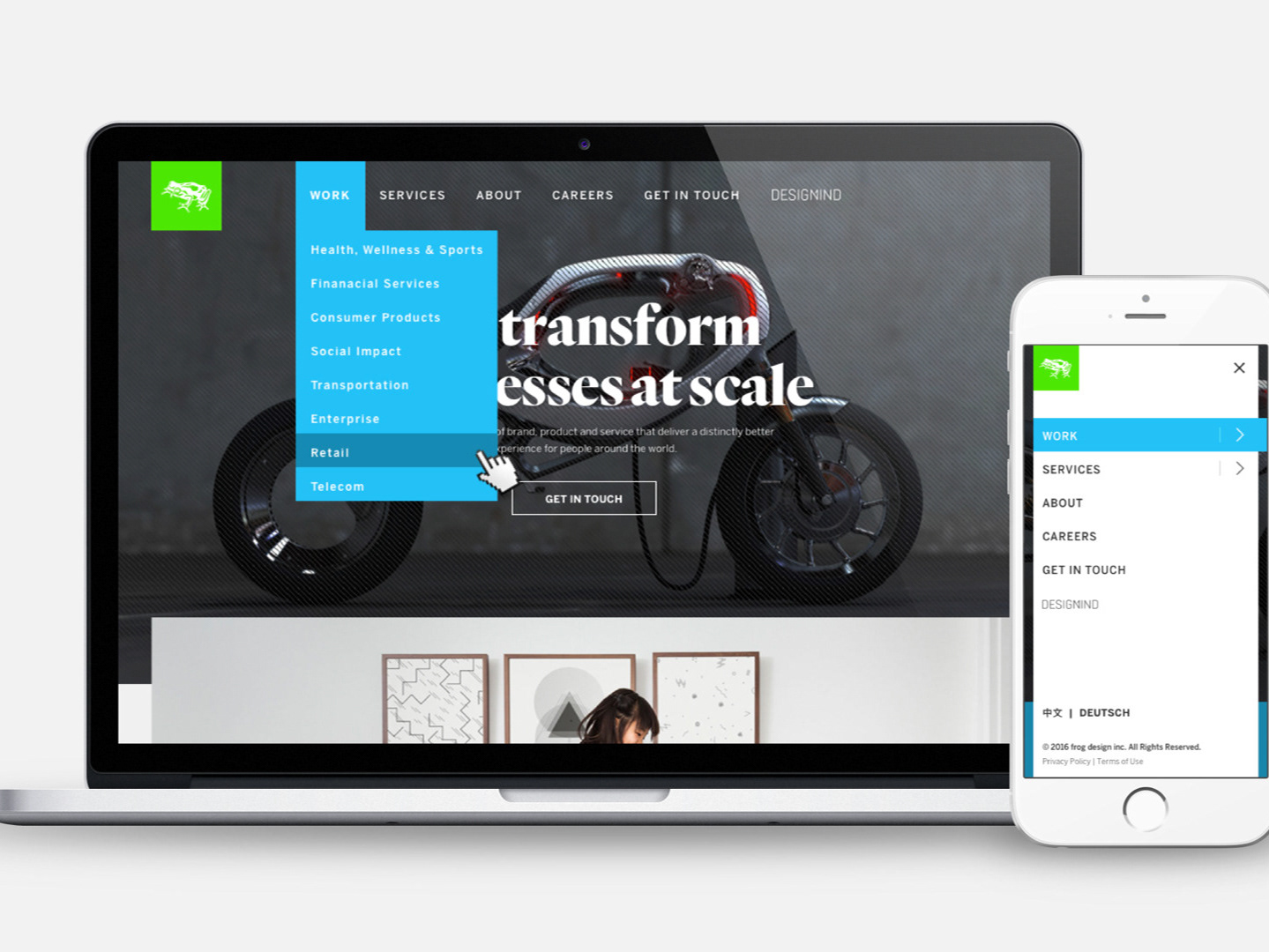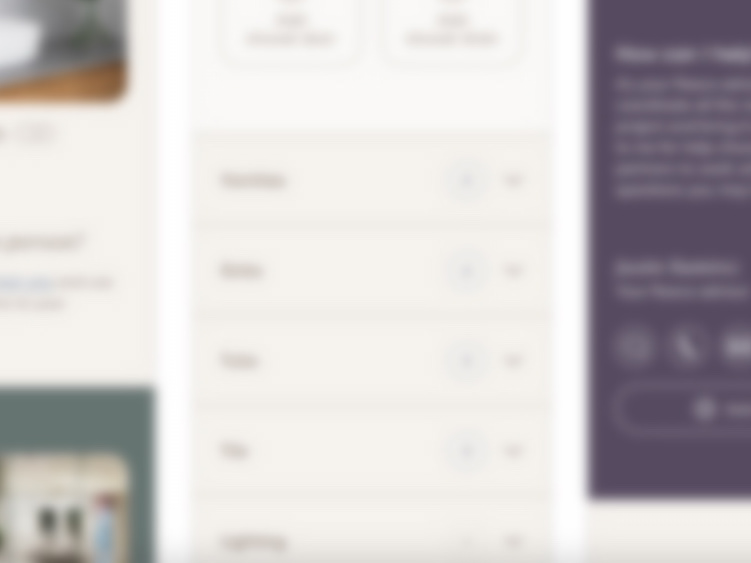The client: Hobby Lobby is a leading U.S. retailer of creative project supplies, plus home decor and seasonal items.
The challenge: Hobby Lobby's ecommerce experience was dated and unsophisticated. Finding the right products in a 70,000-SKU catalogue was daunting, and customers were frustrated by discovering fun project ideas but not knowing what products to buy to do the projects. And due to an awkward corporate site at hobbylobby.com and an ecommerce site on another domain, many brand fans didn't even know Hobby Lobby offered online shopping!
My role: As Associate Experience Director on the project, I played a dual role as a lead individual contributor and a director overseeing the work of two UX designers and two content strategists.
Hobby Lobby's previous ecommerce experience:
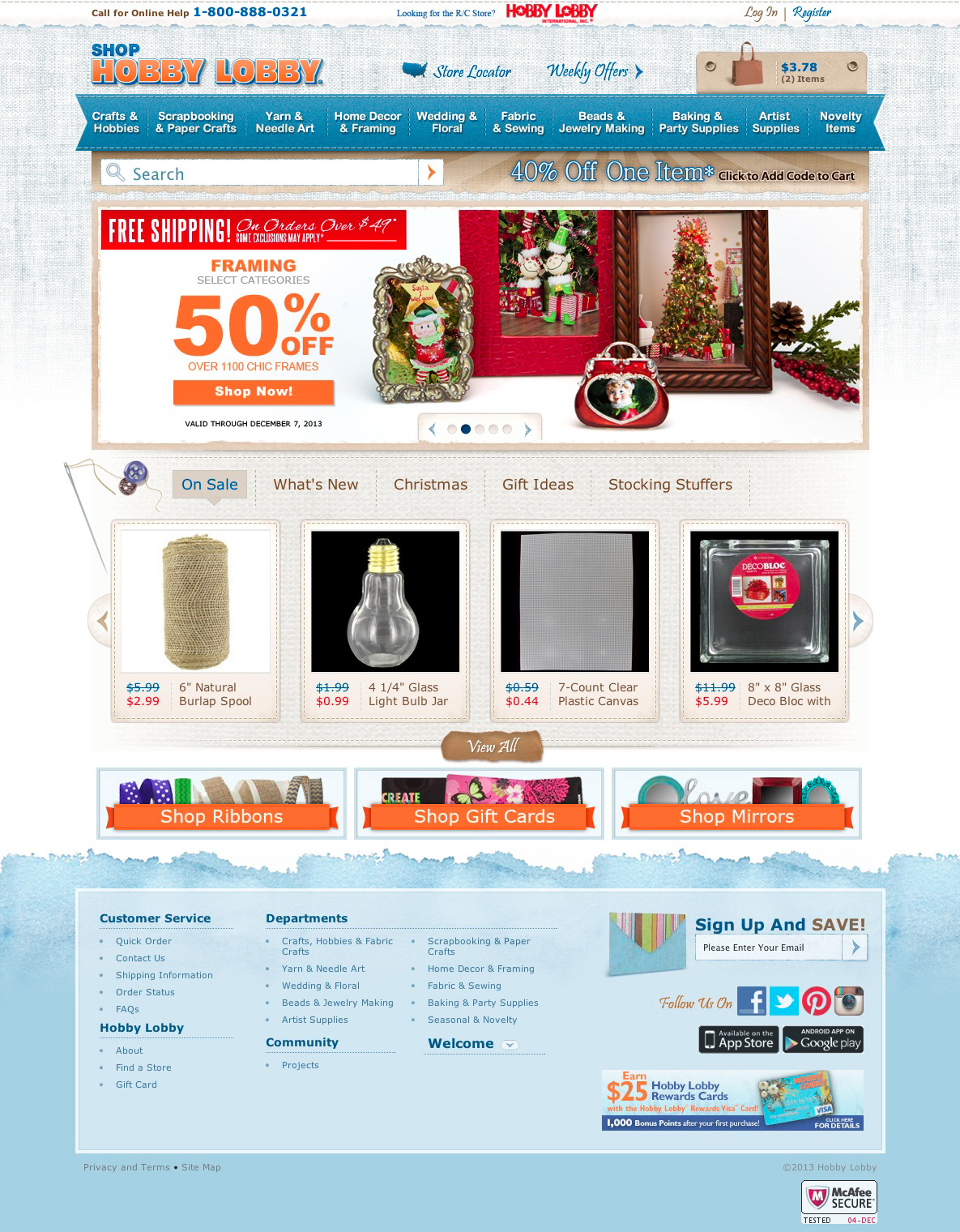
Home page
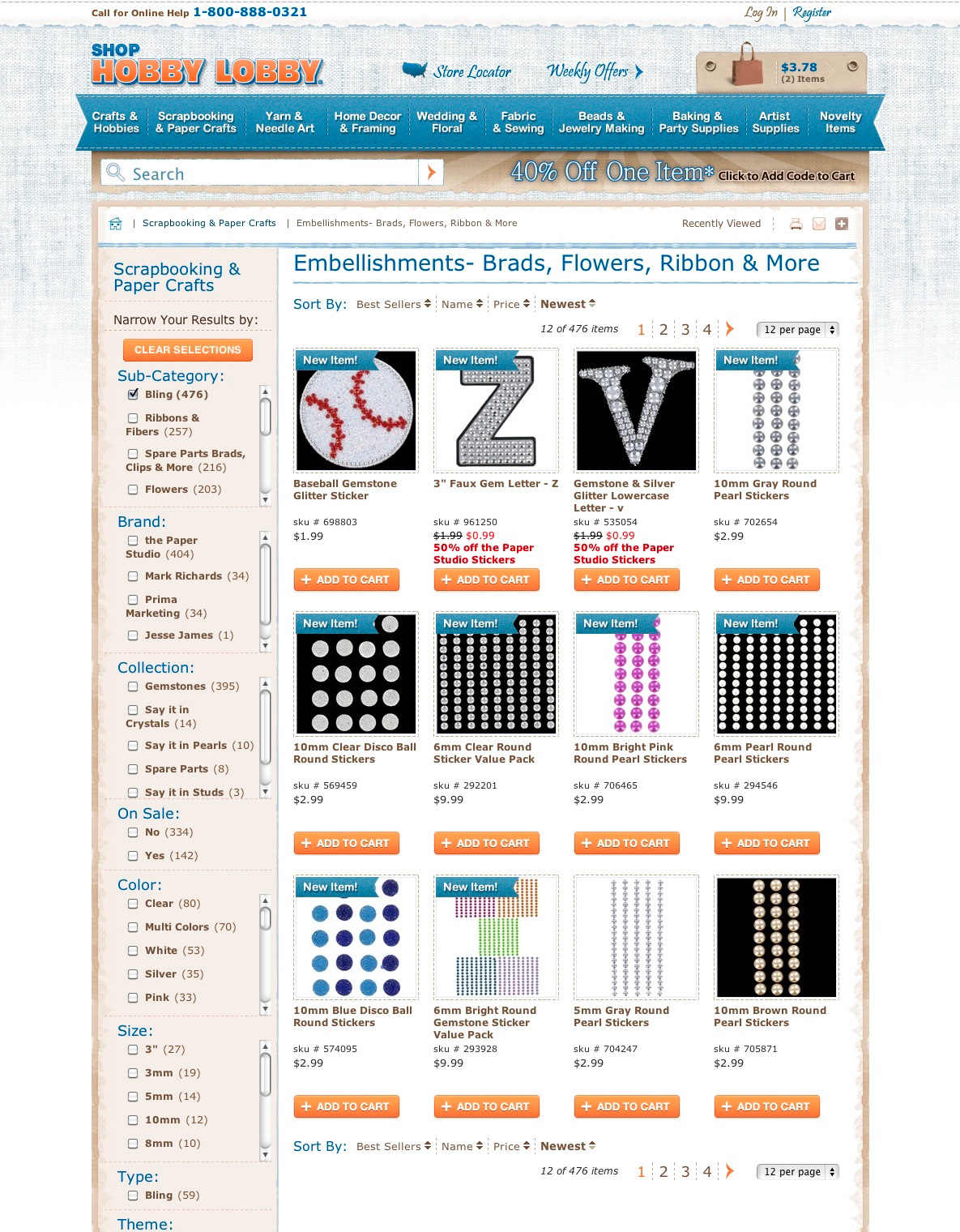
Subcategory page
The process: To understand business goals and user preferences and behaviors, the Razorfish team analyzed the current experience and engaged with stakeholders and users through interviews, user testing, workshops, customer surveys, competitive analysis, and requirements gathering. We synthesized our research and presented our findings and insights along with initial design concepts and branding direction.
Next, with stakeholder approval of our direction, Razorfish cross-functional team leads planned sprints for building out the end-to-end new user experience, with the design team working one sprint ahead of technology throughout the process. The UX team specifically dove in with sitemapping, taxonomy work, user flows, wireframes, IxD specifications where needed, and daily collaboration with our counterparts in visual design, technology, and product management.
Findings and insights from the project vision brief:
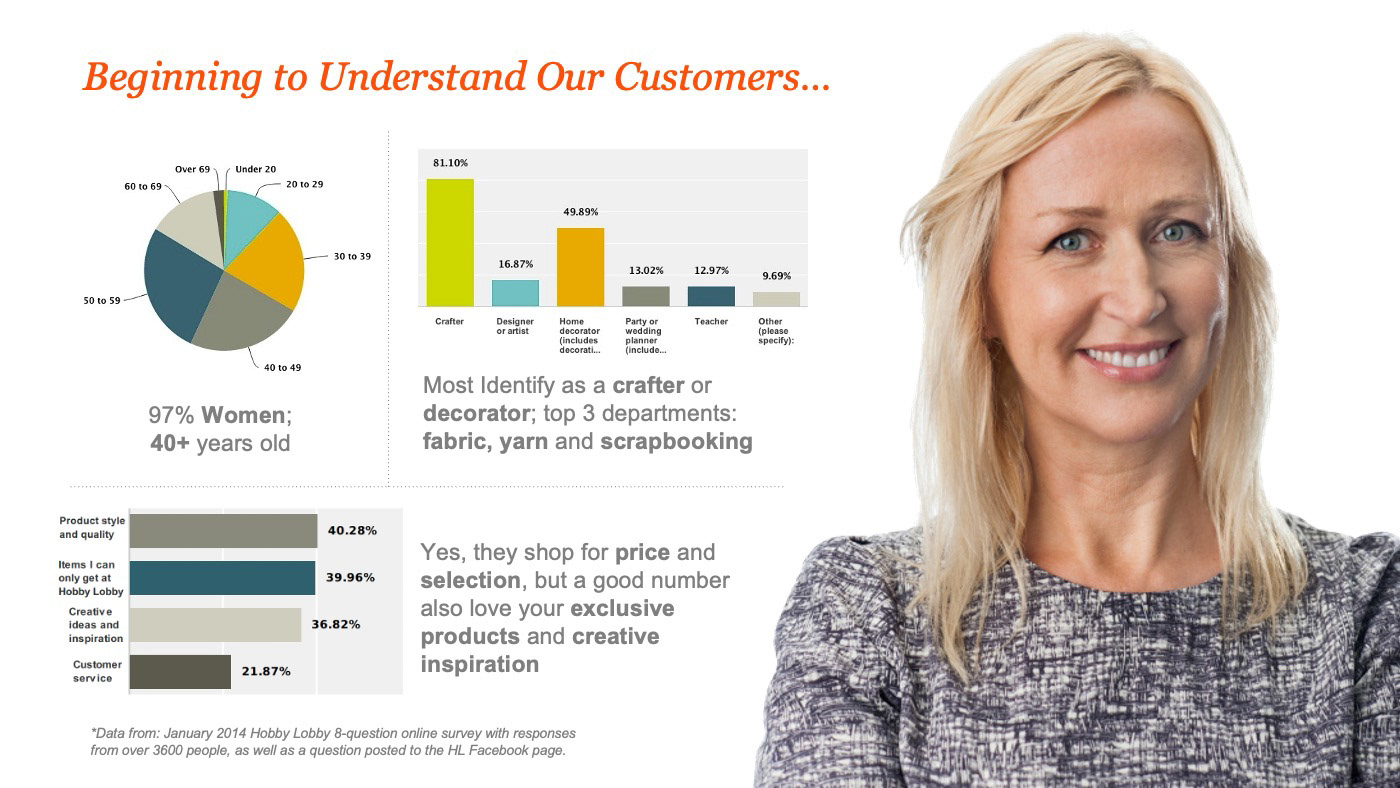
We conducted an online customer survey to learn about Hobby Lobby customers.
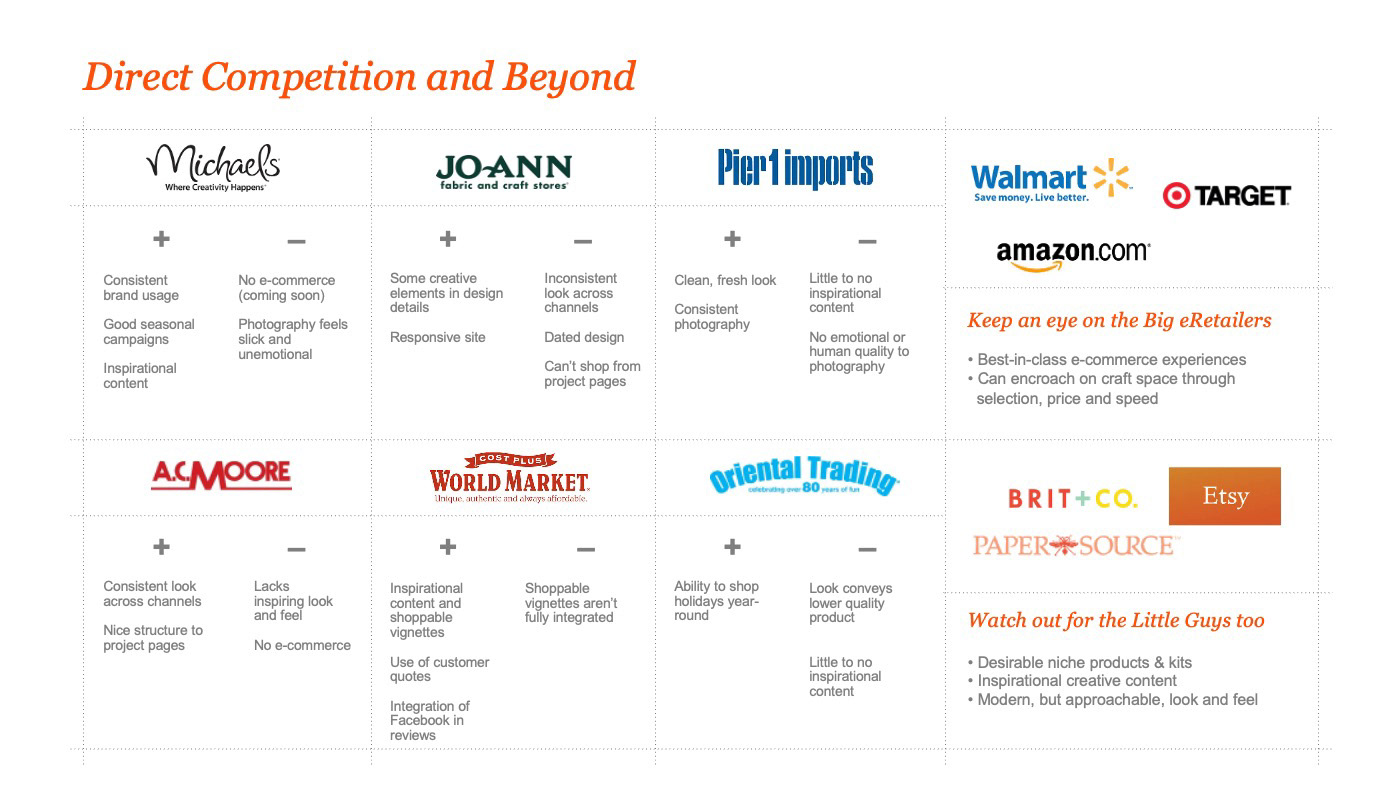
We analyzed the competition.
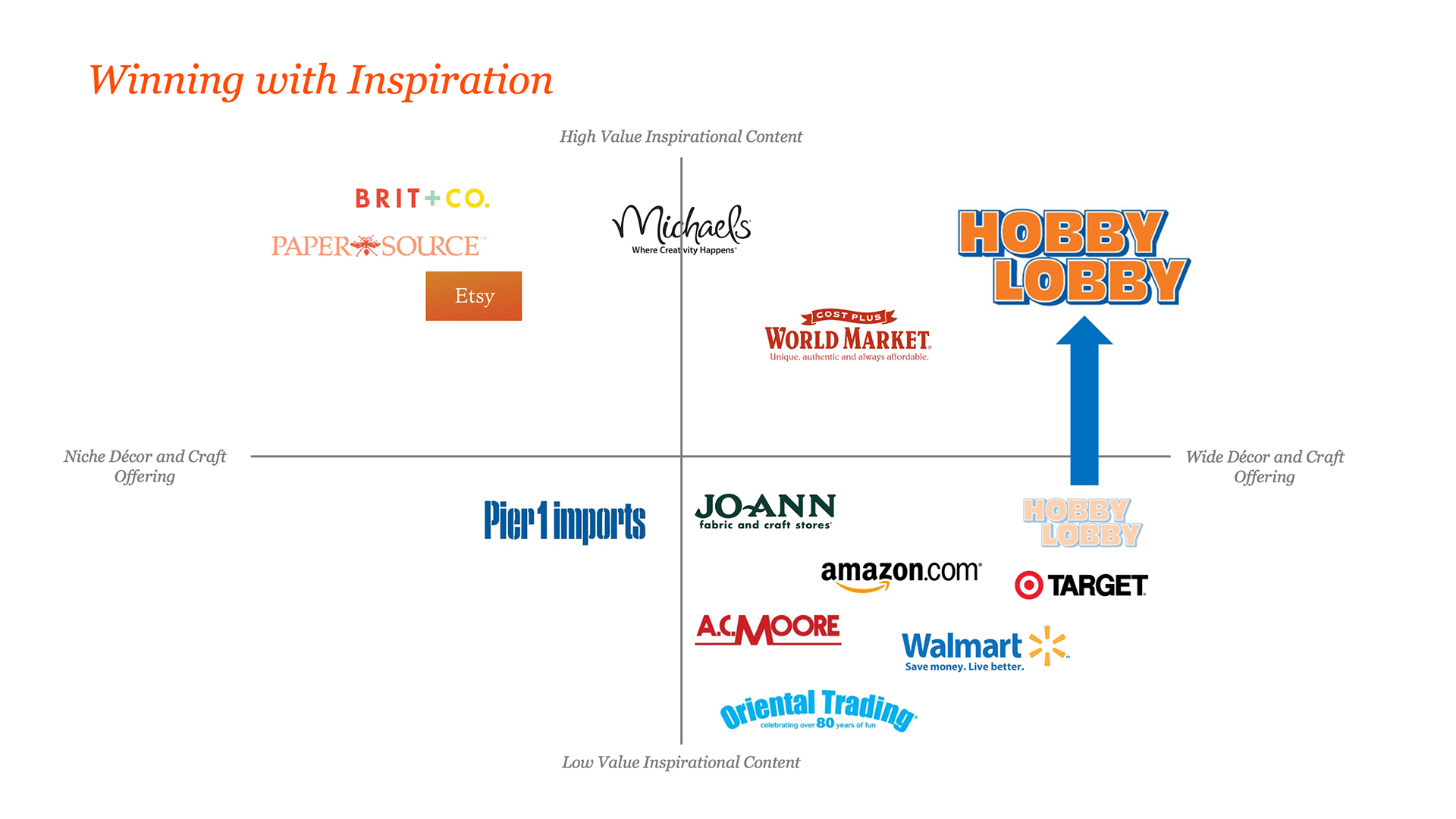
Competitive landscape
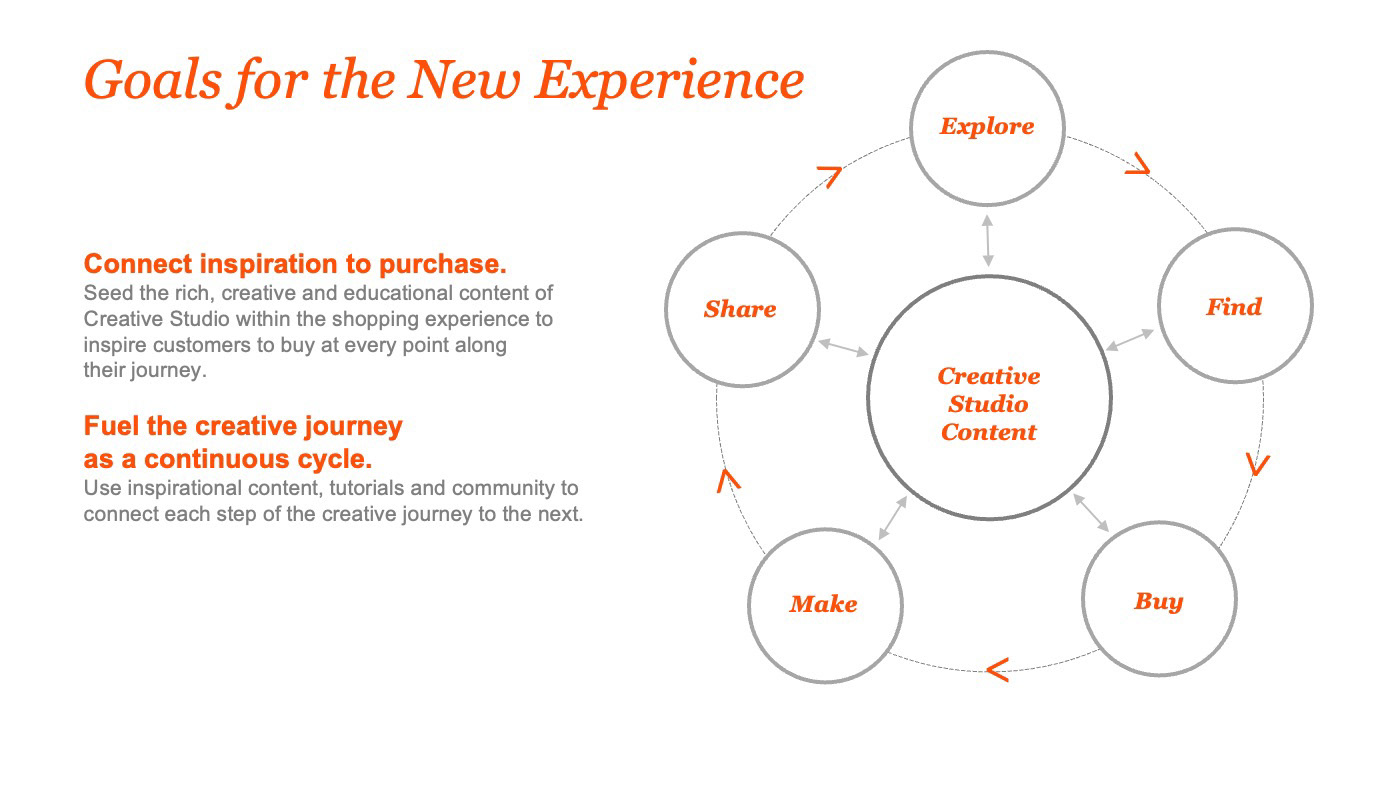
Our conceptual model for the new customer experience
A user test to inform navigation nomenclature:
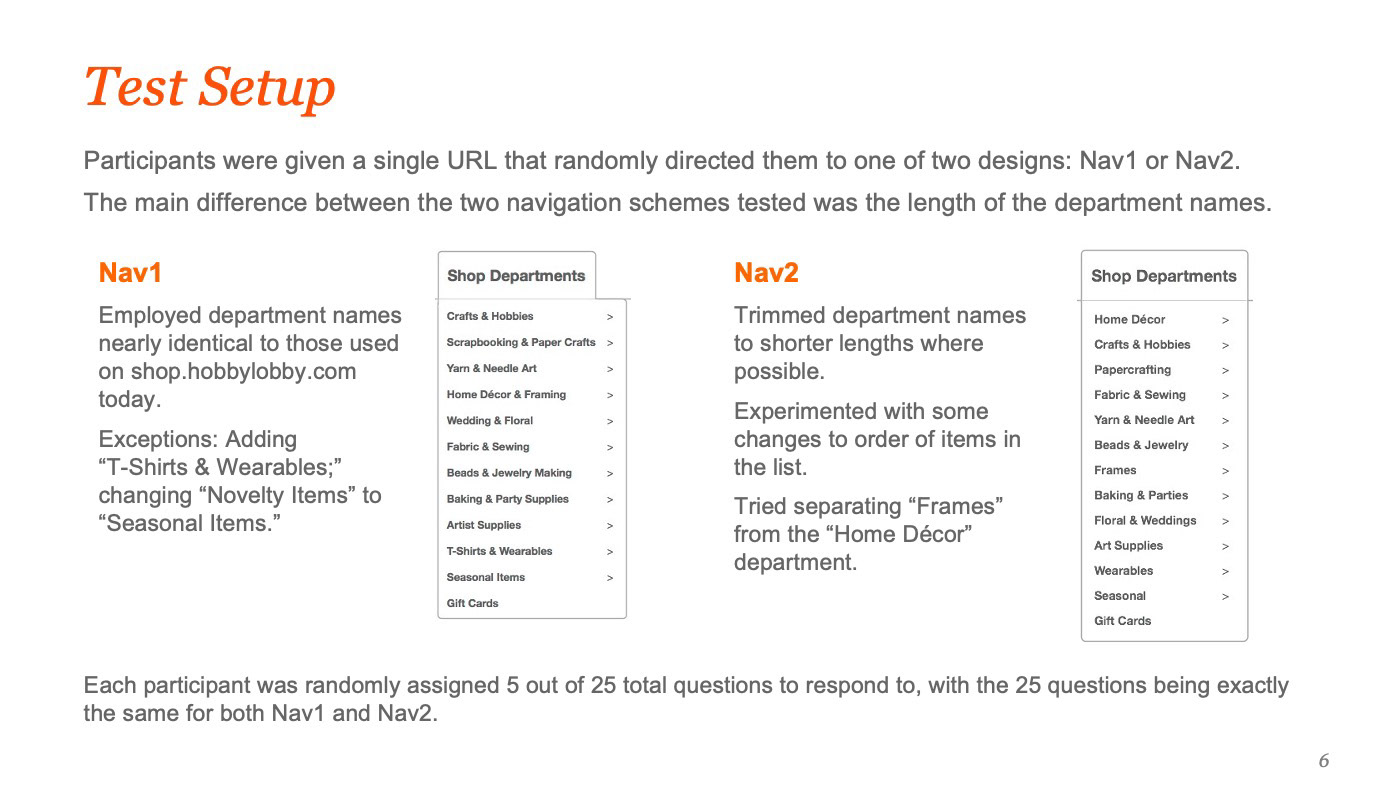
I designed, ran, and reported on an A/B user test comparing two potential nomenclatures for shopping navigation. We recruited test subjects via a post on Hobby Lobby's facebook page.
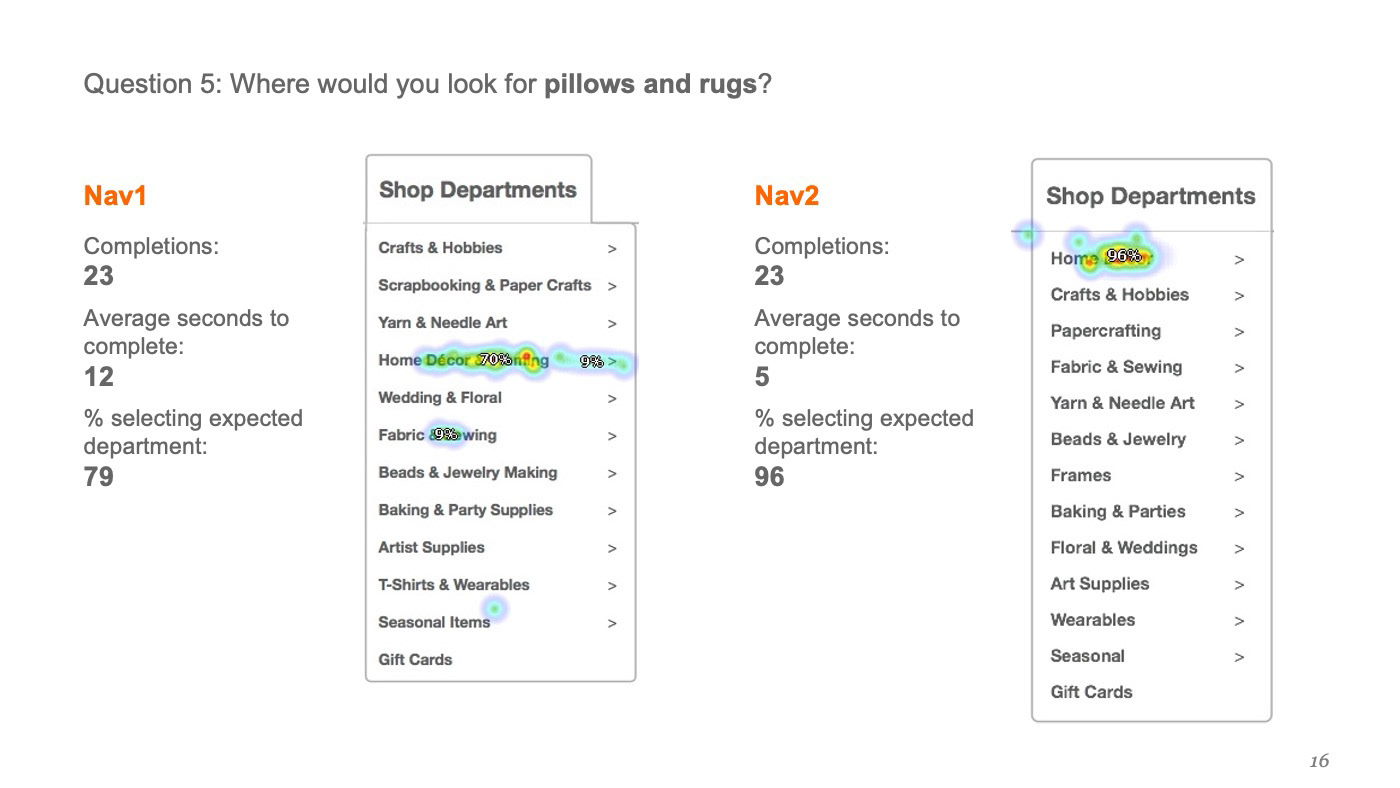
Test subjects answered questions about where they would look for products by clicking on a wireframe, giving us heatmap data plus task completion rate and time.
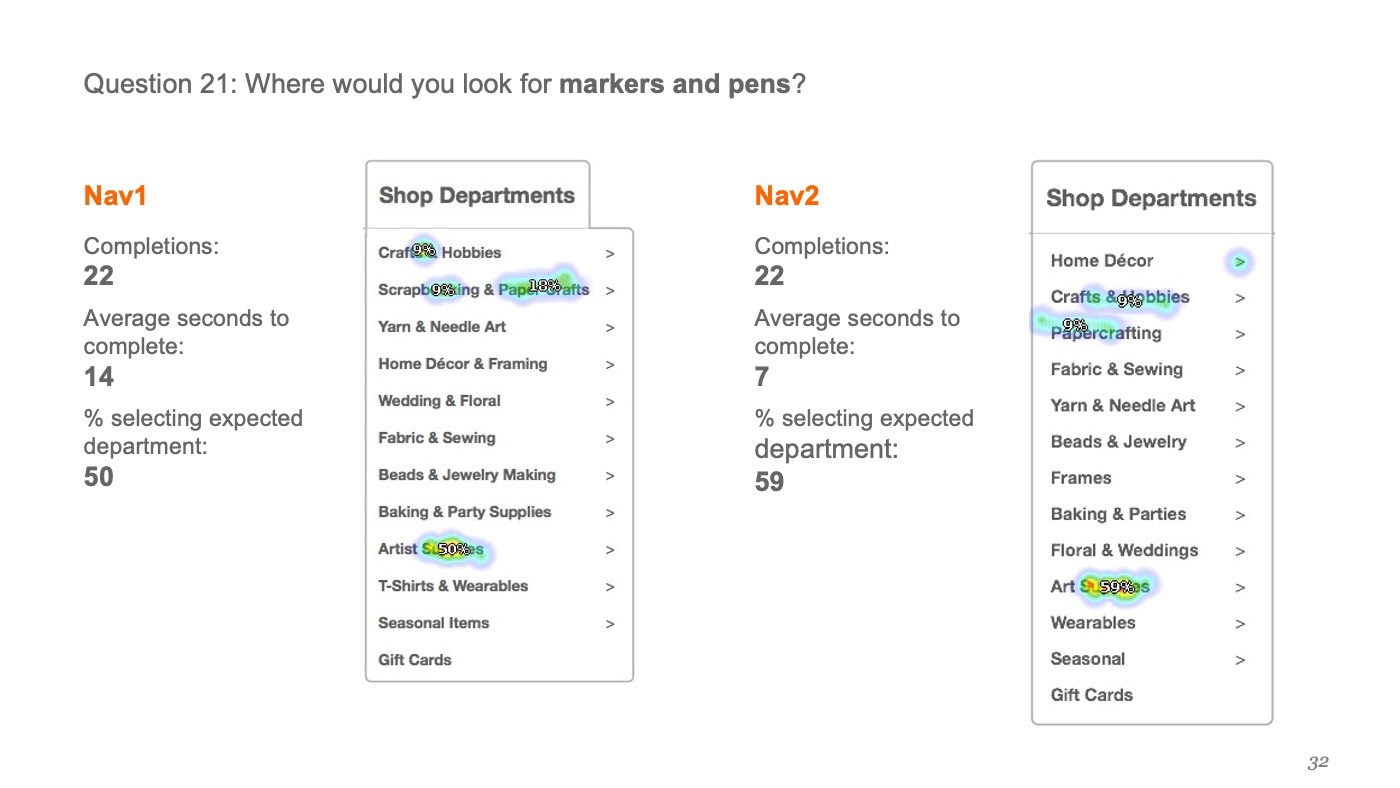
Another sample from the heatmap test results
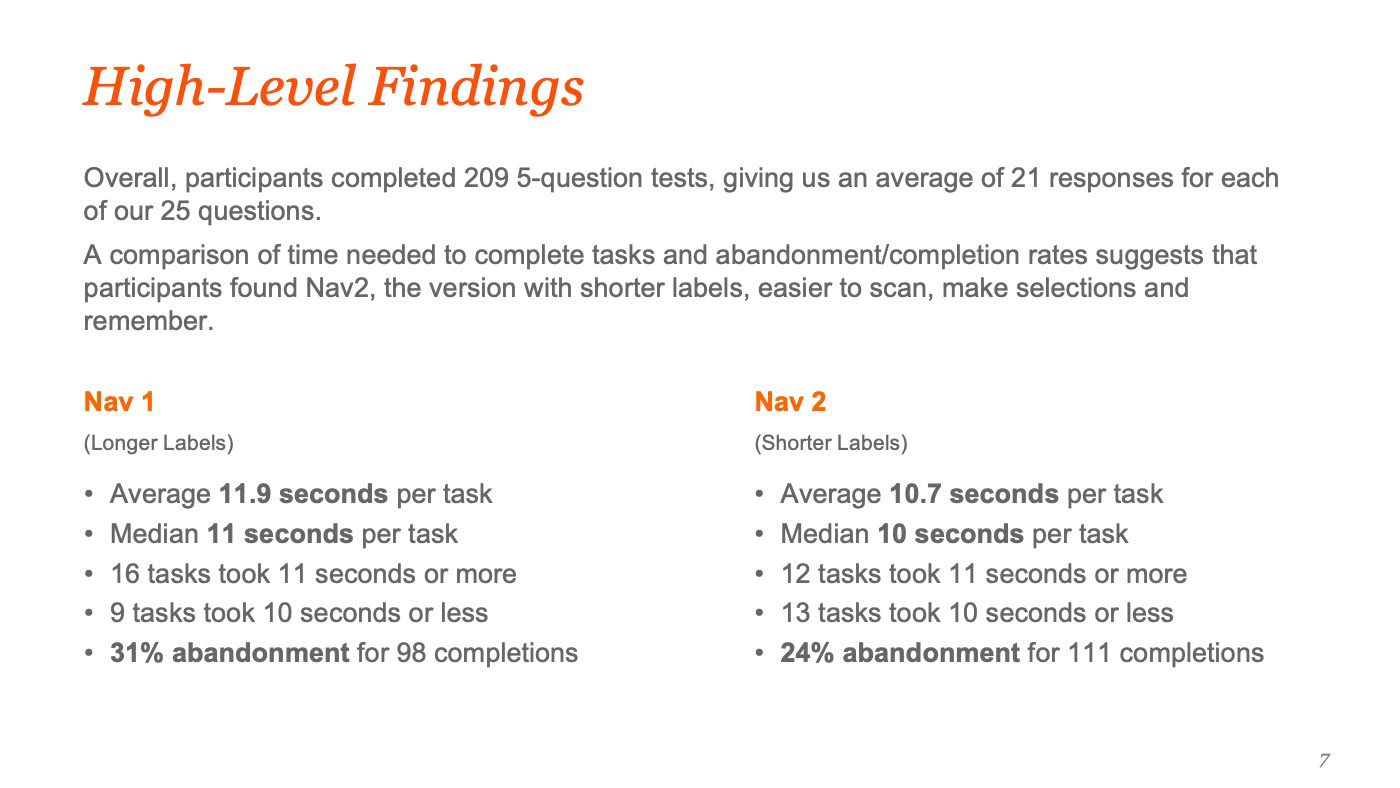
The test results showed that, overall, the shorter labels model was faster and easier for test subjects to use.
Conceptual models for two sites (old model, left) and a unified site (new model, right):
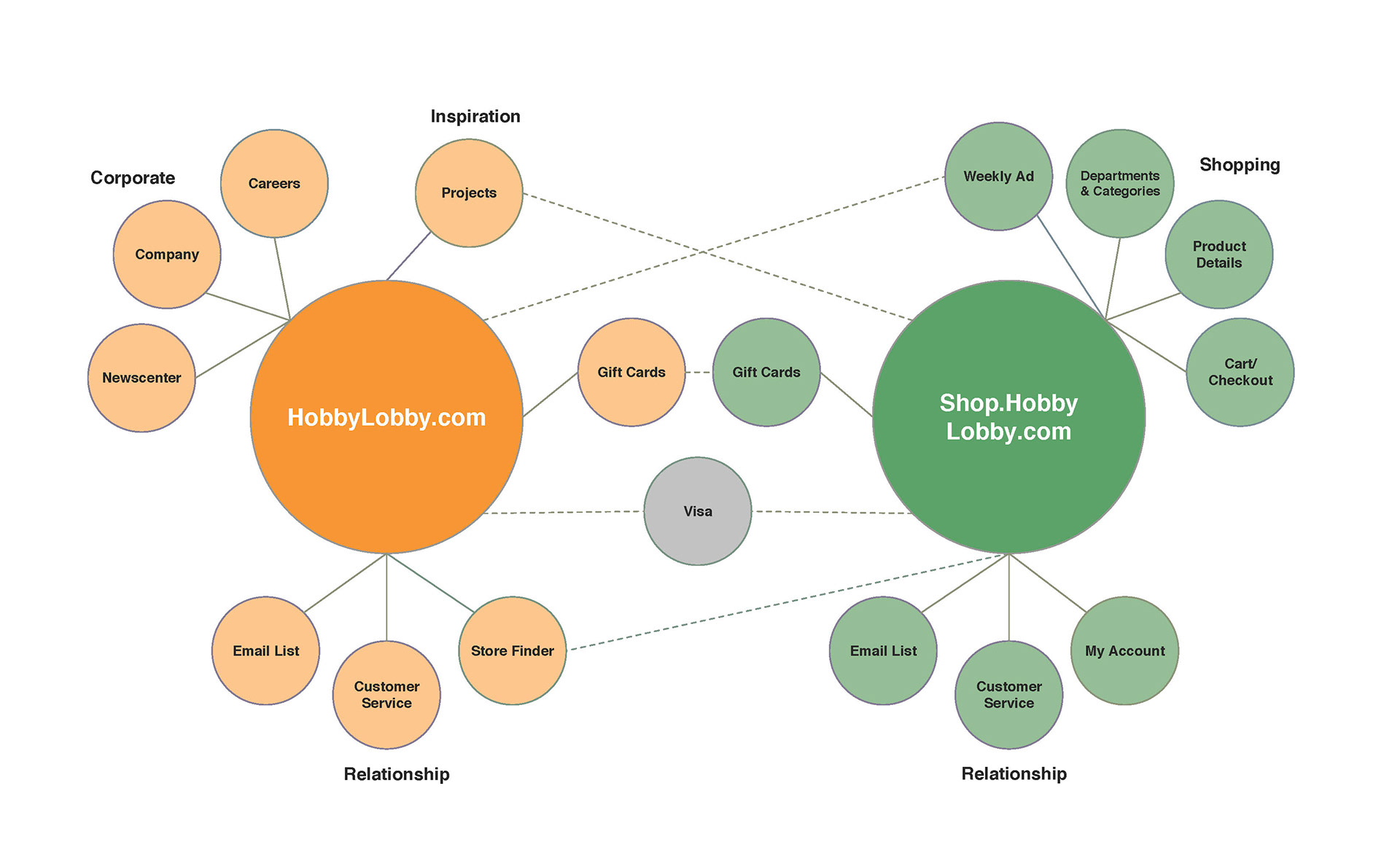
I created the conceptual model for combining two websites into one. Before: Two websites
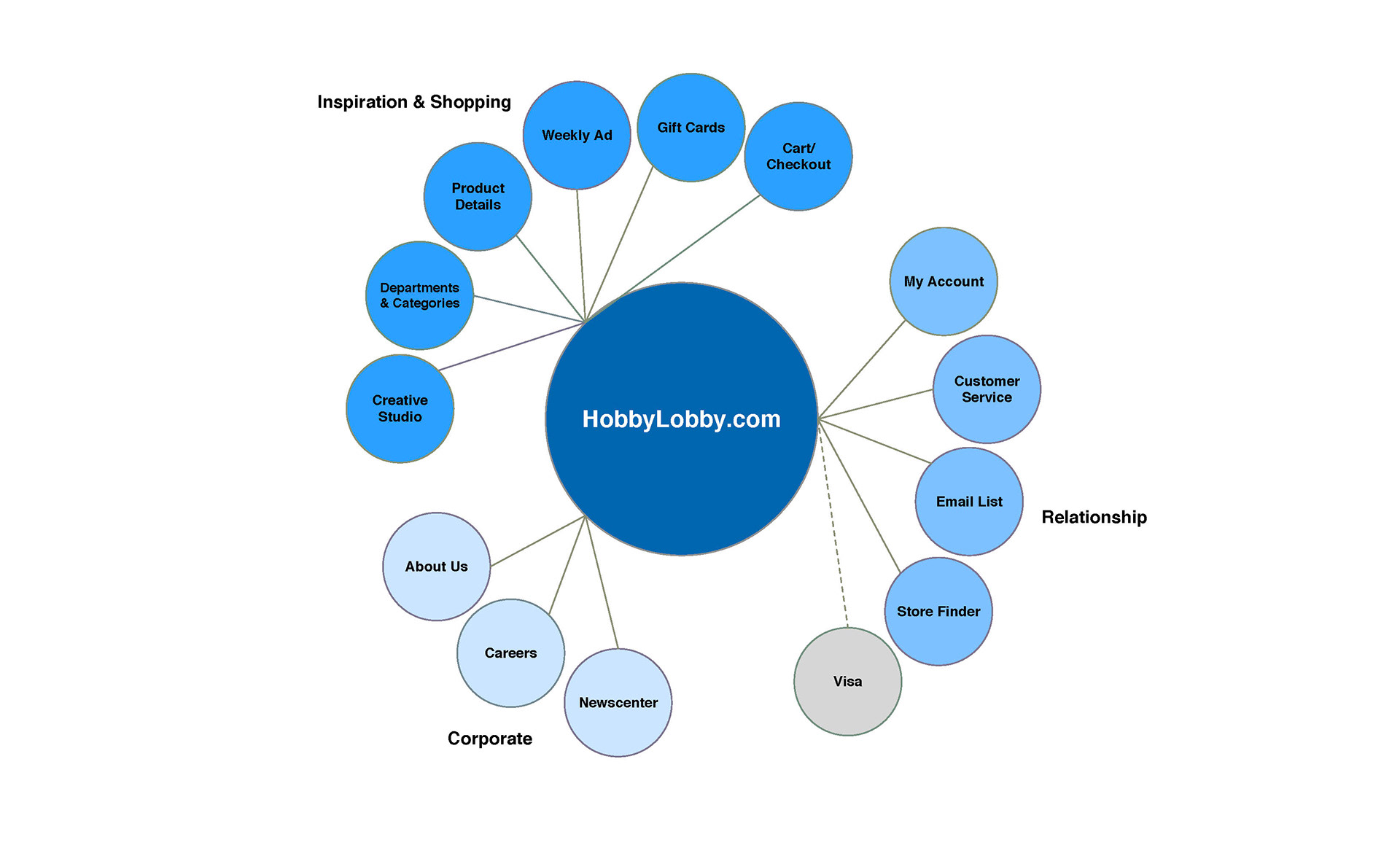
After: A unified experience
The solution: Razorfish designed and built Hobby Lobby's first responsive ecommerce experience. To bring it into the 21st century and really wow customers, we solved some big user experience challenges:
• Merged the separate corporate and commerce sites into a unified experience
• Created shoppable projects containing relevant products and "Add all to cart" functionality
• Created a unified search experience across products and inspiration content
• Introduced product size and color variations on the PDP
• Reworked shopping and filtering taxonomies
• Merged the separate corporate and commerce sites into a unified experience
• Created shoppable projects containing relevant products and "Add all to cart" functionality
• Created a unified search experience across products and inspiration content
• Introduced product size and color variations on the PDP
• Reworked shopping and filtering taxonomies
The new home page design:
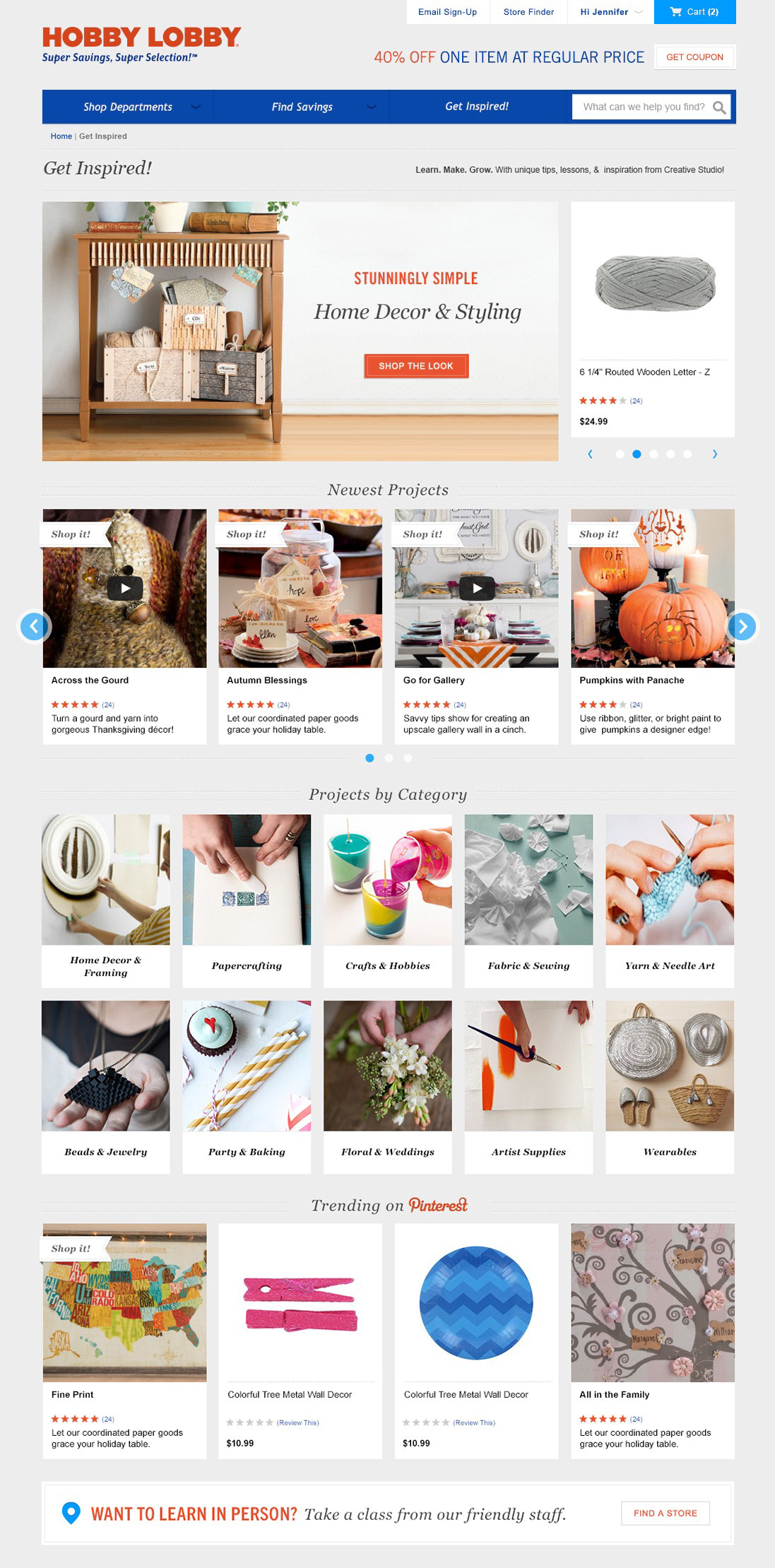
Our team's home page design
One of the new shoppable projects:
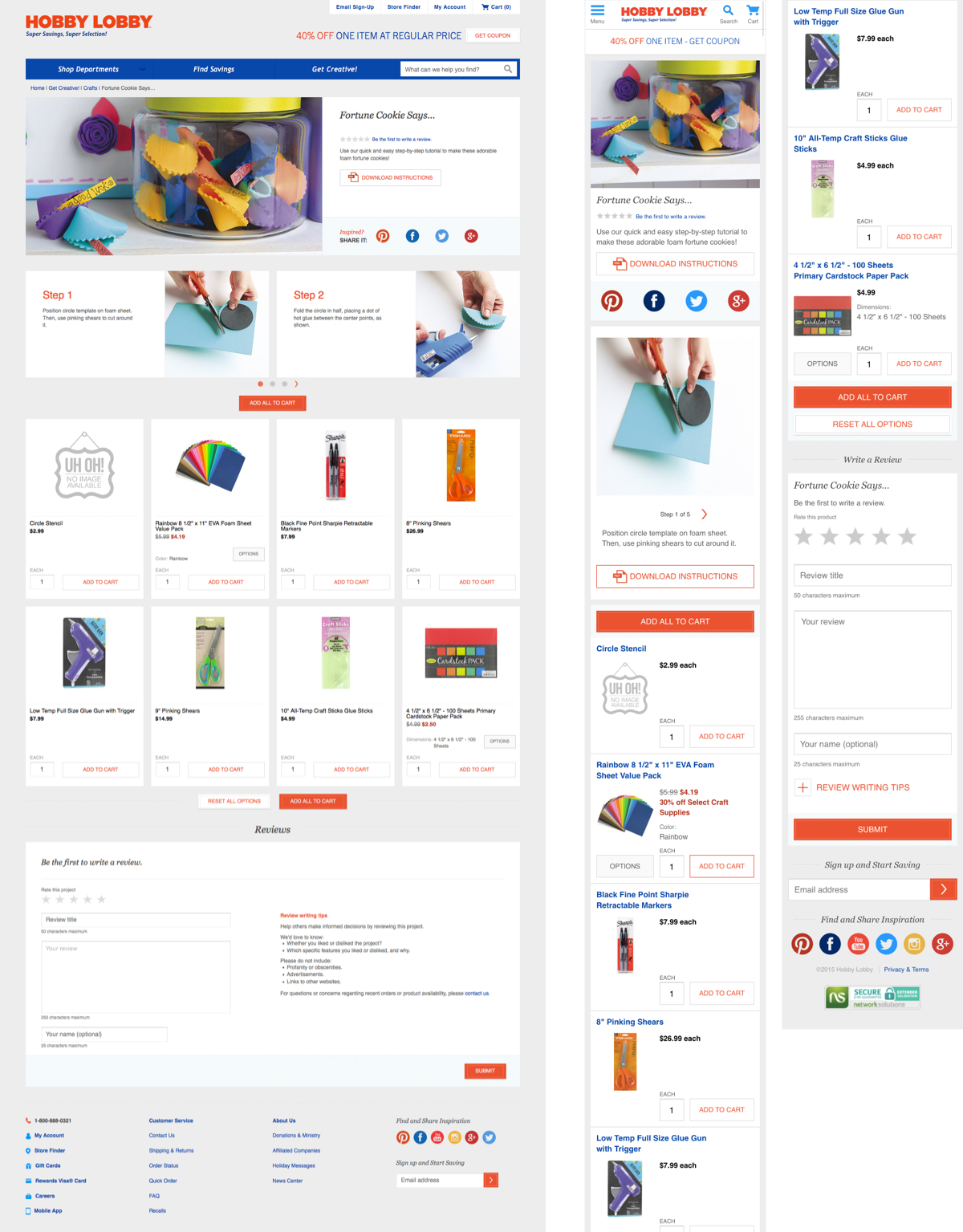
Our visual design team's translation of my wireframes for the new shoppable project page.
The new search experience, bringing product and project results together:

My initial low-fidelity wireframe concept for making products and projects findable via a single search query
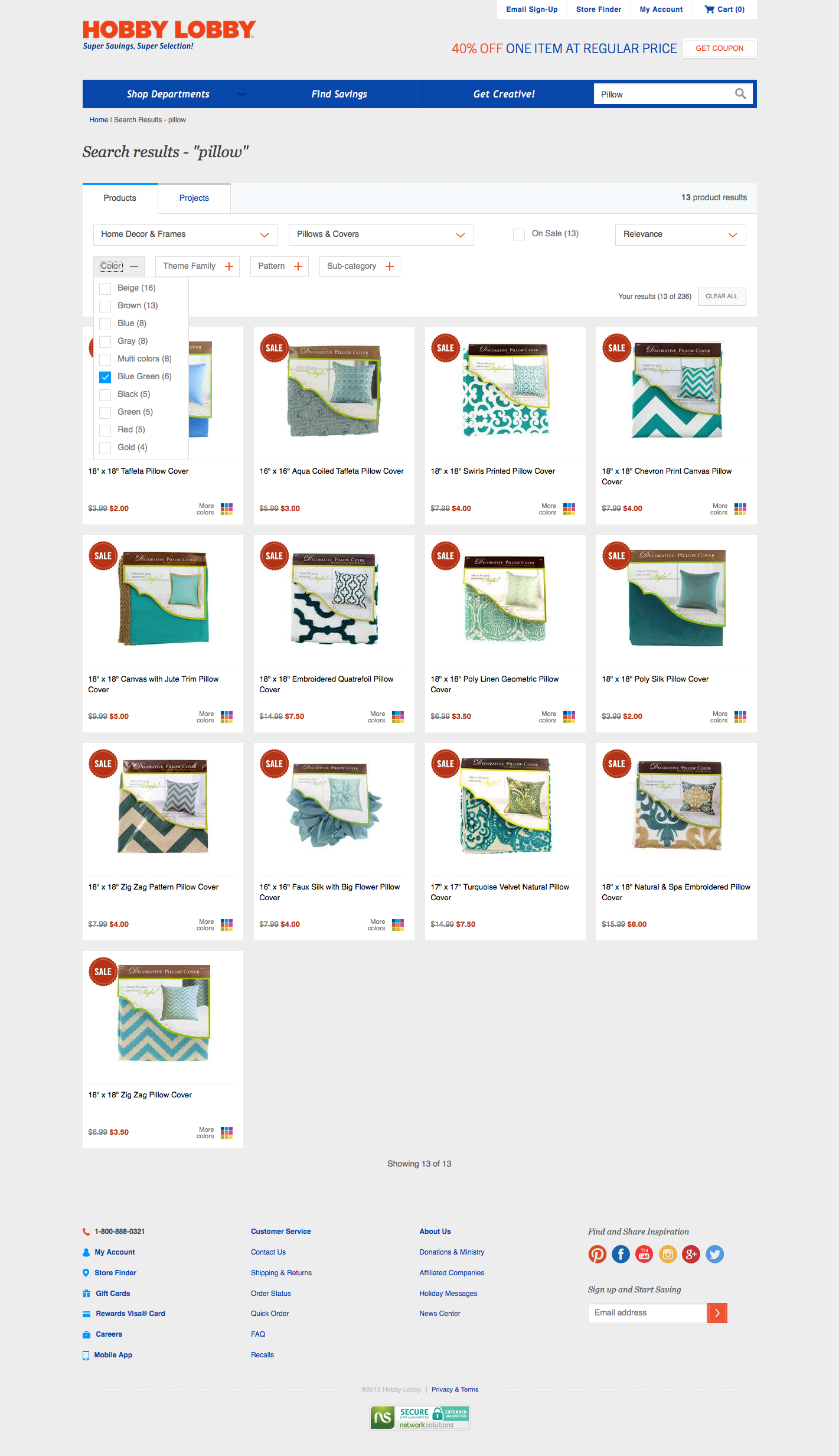
Our visual design team's final design of the unified search results page
Some detailed UX work from the checkout flow:
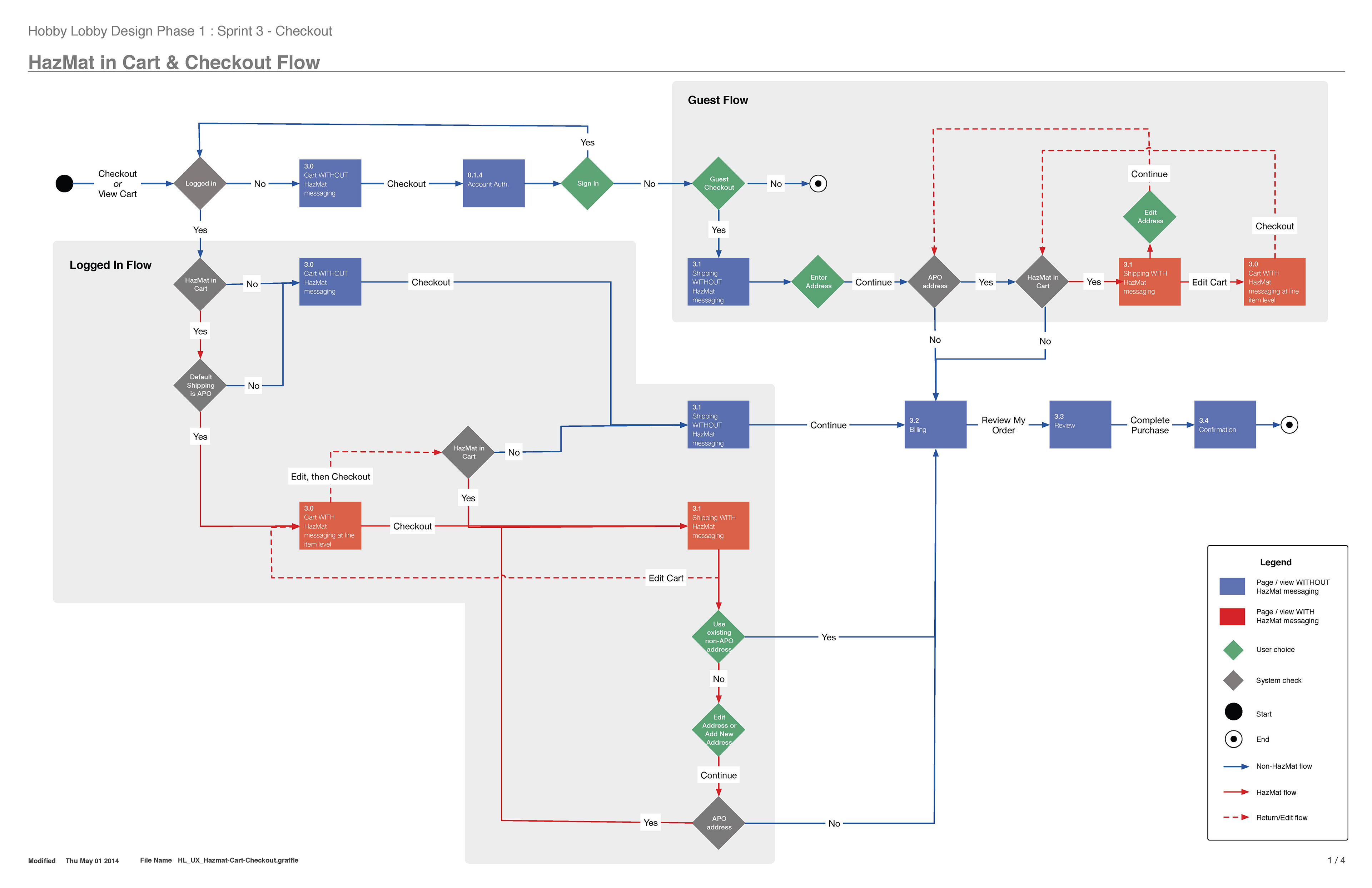
I tackled this gnarly flow for special business rules during checkout.
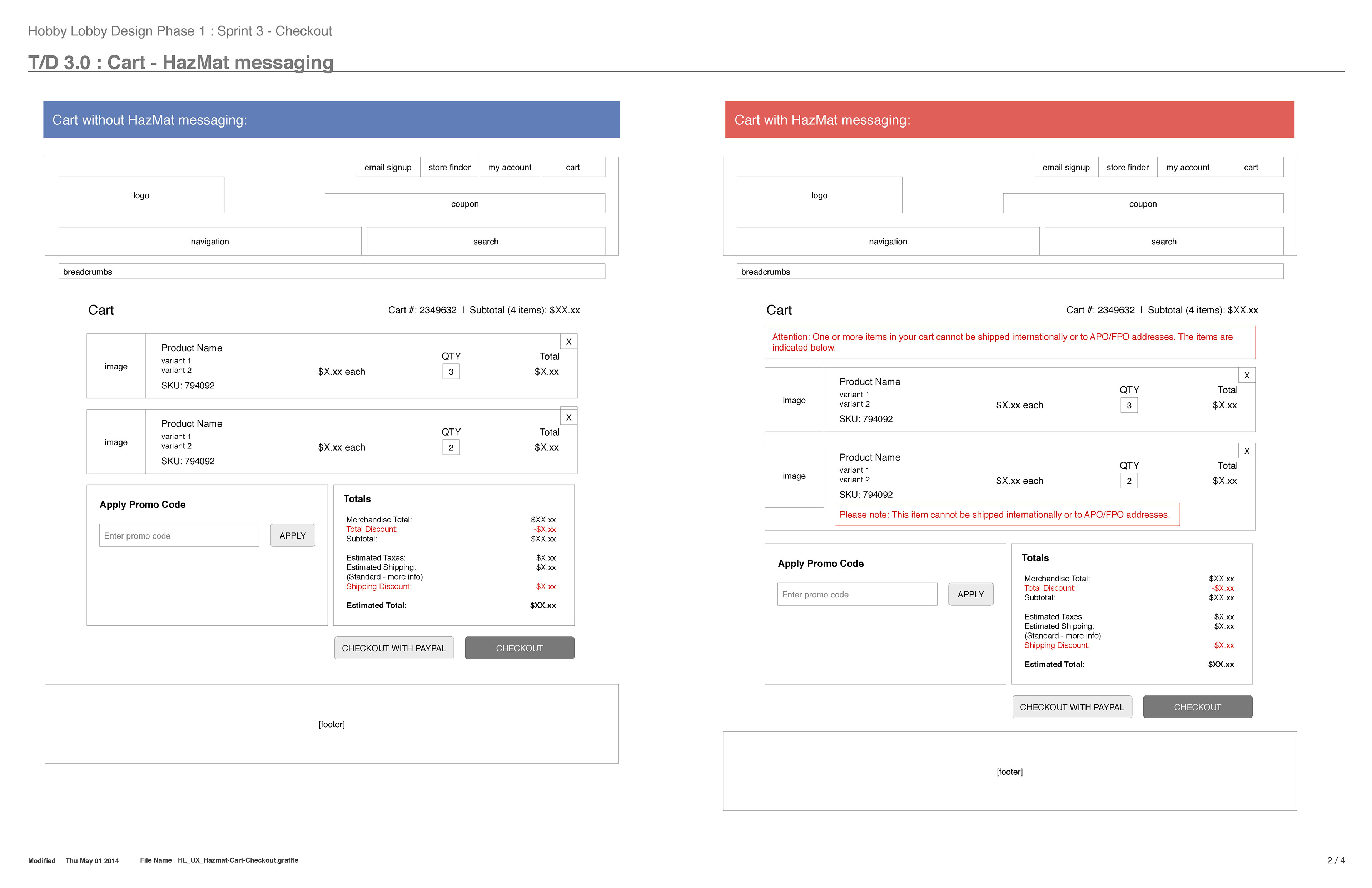
Sample wireframes from the special checkout flow
The outcome: As is often the case with agency work, Razorfish wasn't privvy to impacts on our client's sales and marketing KPIs. But one really awesome outcome was the outpouring of enthusiasm from Hobby Lobby facebook fans on launch day!
My contributions: In addition to guiding the work of two UX designers and two content strategists, I made many specific research and design contributions to the project, including creating conceptual models; designing and running user tests and surveys; wireframing the shoppable project page and unified search experience; and documenting IxD for complex flows, such as product size and color variant selection and hazardous material shipping rules.
The amazing creative team: Todd Ziaja, Creative Director; Emily Brouillet, Content Strategy Lead; Nathan Hardy, Senior Art Director; Kristin Lewis, Senior Experience Designer; Alexis Puchek, Experience Designer; Melanie Seibert, Content Strategist; Caitlin Bauler, Senior Designer; Isaac Martin, Designer; Chrissey Cowdrey, Designer.
Kirsten was simply fantastic to work with: smart, organized, supportive, and effective. She came up with high-quality user-centric solutions that met our client's business needs.
Melanie Seibert | UX Manager @ Indeed
